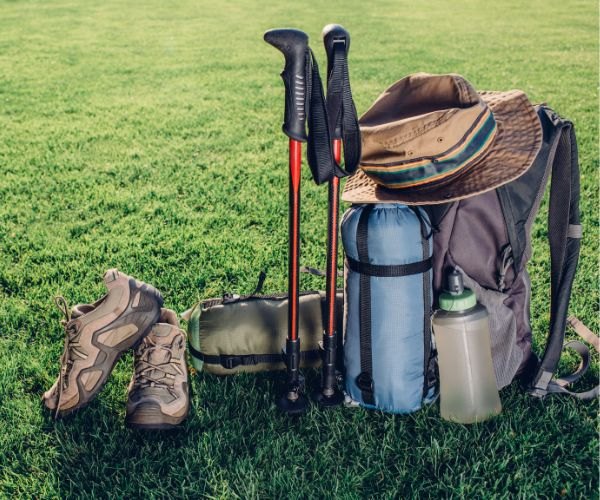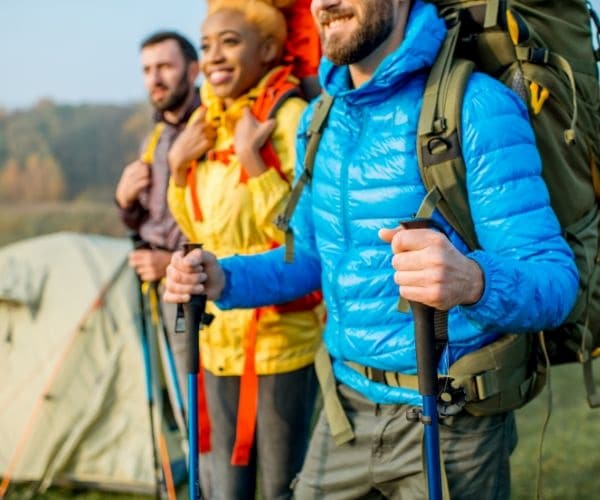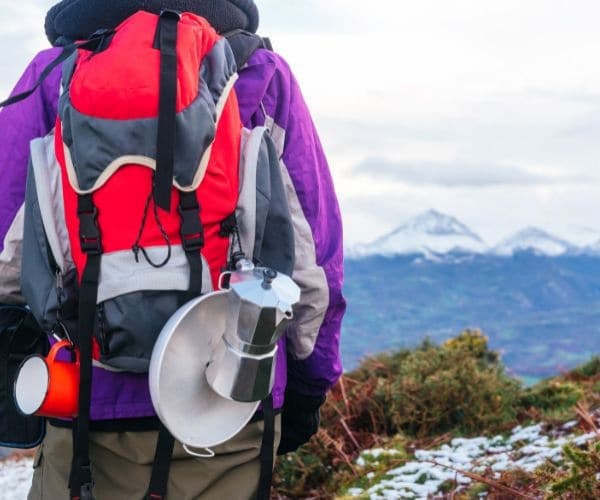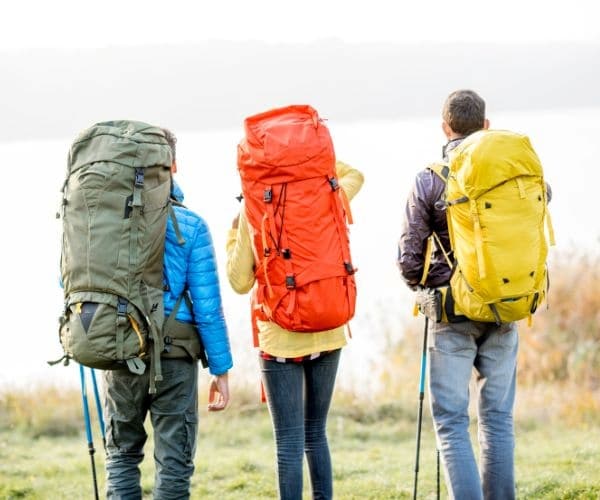Trekking is more than just walking in the hills – it’s about immersing yourself in nature, challenging your limits, and enjoying the freedom of the outdoors. But the right gear can make all the difference between a memorable adventure and a miserable trudge.
Whether you’re a seasoned hiker heading for the Highlands or a beginner exploring your first local trail, trekking equipment plays a vital role in safety, comfort, and performance. This guide covers the best trekking gear to buy in 2025, what works best for beginners, and budget-friendly options, all with a UK focus. We’ve also included up-to-date price ranges so you can plan your kit without breaking the bank.
Trekking gear essentials – the core list

Every hiker has their preferences, but certain items are universally considered part of a complete trekking equipment list:
Clothing layers
Layering keeps you comfortable in changing weather:
- Base layer – wicks sweat away (e.g., merino wool tops).
- Mid-layer – insulates (e.g., fleece jackets).
- Outer shell – waterproof and windproof (e.g., Gore-Tex jackets).
Footwear
Your boots or trail shoes will make or break your trek. Look for good grip, ankle support, and waterproofing.
Backpack
Choose the right capacity:
- 20–35L for day hikes
- 50–65L for multi-day treks
Navigation tools
Map, compass, and/or GPS. Digital is handy but always carry a paper backup.
Hydration system
Water bottles or hydration bladders keep you topped up on the trail.
Trekking poles
Great for stability, especially on steep or uneven terrain.
Lighting
A reliable head torch for early starts, night treks, or emergencies.
First-aid kit
Blister plasters, bandages, antiseptic wipes, and any personal medication.
Cooking gear & snacks
For longer treks, a compact stove and lightweight cookware.
Sleeping gear
For overnight trips, invest in a quality sleeping bag and tent suitable for your climate.
Best trekking gear to buy in 2025

For UK hikers, the best gear combines durability, weather resistance, and comfort. We’ve compiled some of the most recommended products based on reviews, trends, and top searches.
| Gear
| Example
| Price range (GBP)
|
Hiking boots | Scarpa Terra GTX | £150–£200 |
Trail shoes | Salomon X Ultra 4 GTX | £120–£150 |
Waterproof jacket | Rab Downpour Plus 2.0 | £130–£180 |
Backpack (50–65L) | Osprey Atmos AG | £200–£250 |
Daypack (20–30L) | Berghaus Freeflow | £70–£110 |
Trekking poles | Black Diamond Trail | £80–£100 |
Sleeping bag | Mountain Equipment Helium 400 | £230–£280 |
Lightweight tent | MSR Hubba Hubba NX 2 | £450–£500 |
GPS device | Garmin eTrex 32x | £200–£250 |
Seasonal trekking gear guide – UK conditions
The UK’s climate changes dramatically across the year, so tailoring your trekking gear to the season is one of the best ways to stay safe and comfortable. Some kit works year-round, but other items are worth swapping in or out depending on the weather and terrain.
Spring (March–May)
Expect a mix of sunshine, showers, and lingering chill. A breathable waterproof jacket (£70–£180) paired with a mid-weight fleece (£30–£60) handles changing conditions. Waterproof boots with good grip are essential for muddy paths. Lightweight gloves (£15–£25) keep fingers warm in early mornings, and a rucksack rain cover (£10–£20) protects your gear from sudden downpours.
Summer (June–August)
Lightweight, moisture-wicking clothing is your friend—short-sleeved hiking shirts (£15–£30) and convertible trousers (£30–£60) offer versatility. A brimmed hat (£15–£25), sunglasses (£20–£60), and high-SPF sunscreen (£5–£10) help fend off sunburn. Carry extra water or a hydration bladder (£25–£40) for longer treks. Bug spray (£5–£10) can make evenings more pleasant.
Autumn (September–November)
Cooler temperatures and increased rain mean a waterproof, windproof jacket (£100–£200) and waterproof gaiters (£20–£40) become more important. Trails may be slippery with leaves, so boots with solid tread are vital. Shorter daylight hours mean a good head torch (£20–£60) is a must, even for day hikes.
Winter (December–February)
Cold, wet, and sometimes icy conditions require serious gear. Thermal base layers (£40–£80 per set), insulated boots (£150–£250), and a high-performance shell (£200–£350) are essential. For snowy or icy terrain, microspikes or crampons (£40–£120) add grip. Insulated gloves (£25–£50) and a bivvy bag (£15–£30) provide extra safety.
By rotating seasonal gear and layering strategically, you can spread out costs and build a kit that’s ready for any UK conditions.
Latest trends in trekking gear:

- Sustainable materials – recycled fabrics and PFC-free waterproofing.
- Ultralight design – reducing weight without sacrificing durability.
- Hybrid footwear – combining the comfort of trainers with the grip of hiking boots.
Best trekking gear for beginners
If you’re just starting out, focus on comfort, safety, and value for money. Avoid overspending on specialist equipment until you’ve built some experience.
Beginner-friendly picks:
Regatta Calderdale Waterproof Jacket – affordable and reliable for UK rain.
Quechua MH100 Hiking Boots – budget-friendly with solid grip.
Mountain Warehouse Trail 30L Backpack – ideal for day hikes.
Why these work for beginners:
Affordable without compromising essential features.
Easy to use and maintain.
Widely available in UK stores and online.
Budget estimate for a complete beginner kit: around £250–£400 for clothing, footwear, backpack, and basics.
Best trekking gear on a budget

Not all great gear comes with a premium price tag. If you’re trekking on a budget:
Prioritise footwear and waterproof clothing – they have the biggest impact on comfort and safety.
Look for sales and outlet stores – GO Outdoors, Decathlon, and online retailers often run seasonal discounts.
Consider second-hand or refurbished gear – platforms like eBay and Facebook Marketplace can be goldmines.
Budget-friendly kit tips:
Quechua 2-Second Pop-Up Tent – £60–£90
Regatta Pack-It Waterproof Jacket – £20–£30
Alpkit BruKit Stove – £45
Tech & gadgets for modern trekking
Modern trekking gear isn’t just about boots and jackets, technology now plays a growing role in safety, navigation, and comfort. While not essential for every hiker, these gadgets can enhance your experience and provide peace of mind.
GPS Watches (£200–£500)
Models with offline mapping, route tracking, and elevation data help you navigate without constantly pulling out a phone.
Solar Chargers (£30–£80)
Ideal for multi-day treks, they keep phones, GPS units, and cameras powered without hunting for a plug socket.
Personal Locator Beacons (PLBs) (£200–£300)
These send emergency distress signals from anywhere in the world—a lifeline in remote locations without mobile coverage.
Smart Insoles (£100–£150)
Track your steps, monitor fatigue, and identify pressure points to help prevent injuries on long hikes.
While these gadgets can add weight and cost, for serious treks or remote adventures, they’re worth considering as part of your overall safety plan.
Cost breakdown – full trekking kit
Here’s what you might expect to spend depending on your level and goals:
Level | Approx. total cost (GBP) | Example kit |
Beginner Budget Kit | £250–£400 | Regatta jacket, Quechua boots, Mountain Warehouse backpack |
Mid-Range Kit | £500–£800 | Rab jacket, Salomon boots, Osprey daypack |
Premium Kit | £1,000+ | Arc’teryx shell, Scarpa boots, MSR tent, high-end sleeping bag |
Trekking gear maintenance & longevity
Taking care of your gear will extend its life and save money over time:
Clean boots after every hike; reproof waterproofs annually.
Store sleeping bags and tents loosely to maintain loft and prevent mildew.
Check and replace worn parts on backpacks, poles, and stoves.
Final takeaways
Trekking gear is an investment in safety, comfort, and enjoyment. Whether you’re buying your first kit or upgrading to high-performance equipment, choose items that suit your terrain, climate, and style of trekking.
If you’re new to hiking, start with affordable, well-reviewed essentials and upgrade over time. Always remember, good gear doesn’t replace good preparation.
For more advice on staying safe and choosing the right kit, check out:
With the right equipment, the UK’s trails, peaks, and coastal paths are yours to explore – comfortably, confidently, and without nasty surprises from the weather.
Get Trekking & Hiking Insurance with SportsCover Direct
From leisurely glacier walks to challenging high-altitude expeditions, there’s a trek to suit every level of experience. But before setting out, it’s essential to think about insurance. Trekking in remote or icy terrain brings its own set of risks, and having specialist cover can be a real lifeline if the unexpected happens.
For decades, SportsCover Direct has been protecting adventurous travellers with tailored trekking insurance. Our policies include cover for emergency medical care, mountain rescue, repatriation, trip cancellations or delays, plus loss or damage to your luggage and specialist trekking equipment. That way, if your gear is stolen, damaged, or lost in transit, you won’t be left out of pocket or unprepared.
With premiums starting from just a few pounds a month, it’s a small price to pay for the reassurance of knowing you – and your equipment – are protected. Explore our trekking insurance options today and step onto the trail with complete confidence.
This blog has been created as general information and should not be taken as advice. Make sure you have the correct level of insurance for your requirements and always review policy documentation.